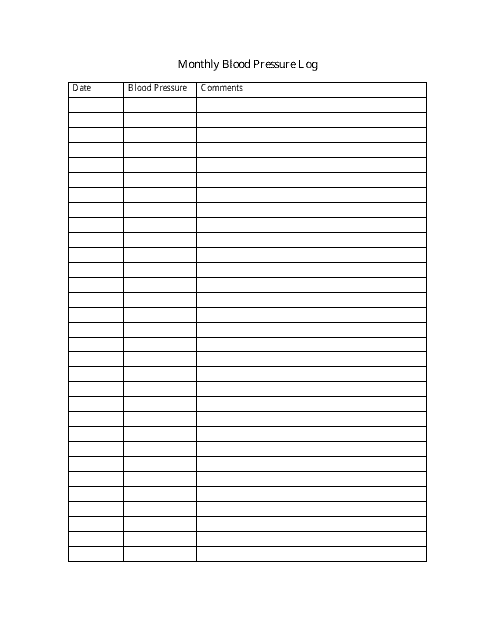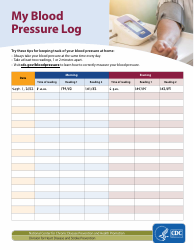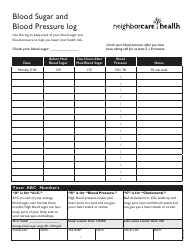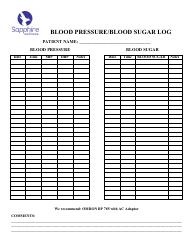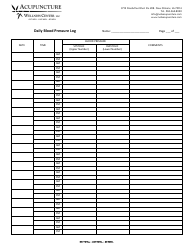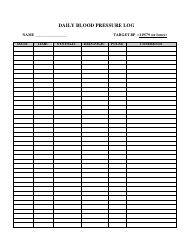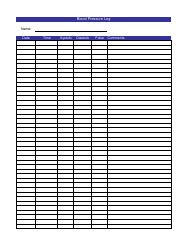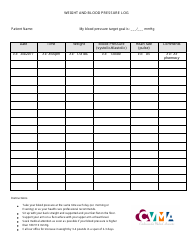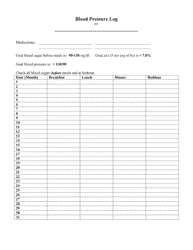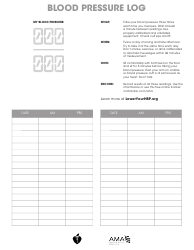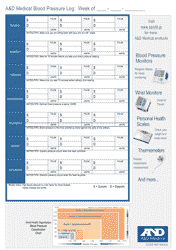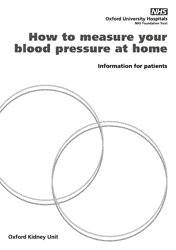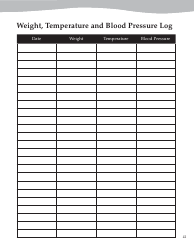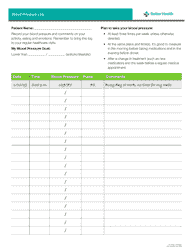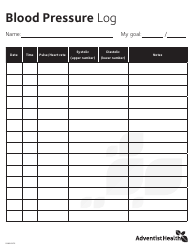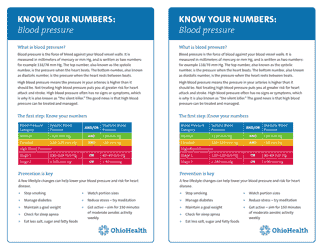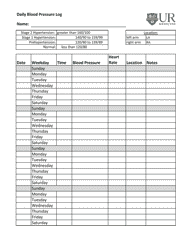Monthly Blood Pressure Log
A Monthly Blood Pressure Log is a useful tool to monitor and track your blood pressure over a period of time. It helps individuals and health care professionals identify patterns, trends, and changes in blood pressure. This document can be crucial in managing health conditions like hypertension and can assist in making decisions about your treatment plan. It usually includes spaces to record your blood pressure readings at different times of the day for each day of the month.
A Monthly Blood Pressure Log is often filed by individuals who are monitoring their blood pressure levels regularly due to health reasons, usually under the advice of a healthcare professional or physician. This can include patients with hypertension, cardiovascular disease, or those who are just keeping track of their general health. In some cases, caregivers or healthcare providers may also keep this log on behalf of the patient. Please note, the specific rules and requirements may vary by country and healthcare system.
FAQ
Q: What is a monthly blood pressure log?
A: A monthly blood pressure log is a tool often used to track and monitor one's blood pressure readings over a period of a month. It can be important for managing conditions like hypertension.
Q: How do you monitor blood pressure at home?
A: To monitor blood pressure at home, you need a home blood pressure monitor. Place the cuff on your arm, following the device's instructions carefully, and then read the blood pressure measurements on the screen.
Q: What information is usually included in a monthly blood pressure log?
A: A monthly blood pressure log typically includes the date, time, and your systolic and diastolic blood pressure readings. It may also include notes about factors that could have affected the reading like stress or meals.
Q: How can a monthly blood pressure log be used?
A: A monthly blood pressure log can be used to track changes or patterns in blood pressure over time. It can be an important tool for negotiations with your doctor about your health and the effectiveness of treatments or lifestyle changes.
Q: What is a normal blood pressure reading?
A: A normal blood pressure reading is usually around 120/80 mmHg. However, 'normal' can vary from person to person. It's best to consult with a healthcare professional for advice on what normal blood pressure is for you.
Q: Why is it important to keep track of your blood pressure?
A: Tracking your blood pressure is important because high blood pressure often has no symptoms, so without regular checks, it might go unnoticed. Keeping a log can help you and your healthcare provider recognize any patterns or changes over time, which can be crucial in diagnosing and treating potential health issues.
Q: Can you share your blood pressure log with your doctor?
A: Yes, your doctor would generally encourage you to share this log with them. It provides them with valuable information about your health over a period of time rather than a single point. It also helps them to adjust your treatment plan if necessary.
Q: Does a digital blood pressure monitor keep a log?
A: Some digital blood pressure monitors have the function to store a number of readings, which can act as a log. However, it may still be beneficial to keep a written or digital log for consistency and ease of sharing the information with your healthcare provider.
